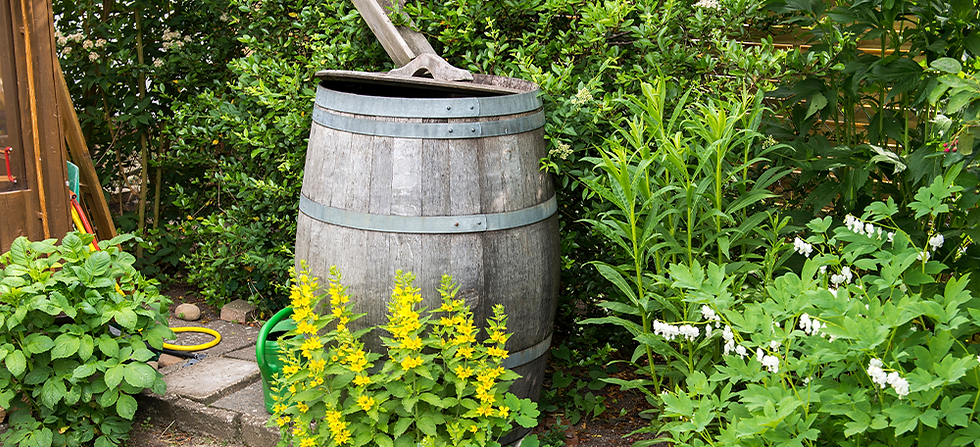Water Conservation: Achieving an Eco-Friendly Garden
- LVHG

- Jul 25, 2022
- 3 min read

As the famous saying goes, "to plant a garden is to believe in tomorrow." Reducing your water consumption in the garden is one way to help create a better tomorrow and be more eco-friendly in your gardening practices. Conserving water can save you both money and time and helps to keep our rivers, bays, and estuaries clean by consuming less water from them. Here is our guide to being more eco-friendly and conserving water in the garden with methods including hydrozoning, mulching, planting drought tolerant plants, and more!
Hydrozoning
Be more eco-friendly and conserve water in the garden by implementing a hydrozoning strategy to ensure each of your plants receives the perfect amount of water. Hydrozoning involves grouping your plants in designated areas of your garden based on their water needs; this prevents you from overwatering crops in your garden that don't need the extra hydration and greatly reduces your environmental impact. Plus, your garden will look great with this individual plant care and attention to detail!

Mulching
Mulch helps your soil retain moisture for longer periods of time by preventing it from drying out quickly. It reduces the soil's exposure to wind and sun, which results in less evaporation. These insulating properties regulate your soil temperatures throughout different seasons, serving as a heat barrier in the summer and a warm blanket in the winter. This simple step goes a long way for the health of your plants!
Water Based on Soil Moisture
Relying on your senses to indicate when your soil needs watering helps ensure that you aren't watering unless necessary. Even if your soil looks dry on the surface, it might only be the top couple of inches that have dried out! Poke your finger a few inches deep into your soil; if it's still moist underneath, it can go without water for a bit longer.

Install a Rainwater Catchment System
Rainwater catchment systems rely on the help of mother nature to keep your plants hydrated. This practice is also super eco-friendly, as it deters soil erosion, flooding, and surface water pollution with fertilizers, pesticides, and other harmful chemicals. You can DIY your own eco-friendly rainwater catchment system or pick one up at your local garden center. There are an array of awesome options that are both high quality, eco-friendly, and cost-effective.
Water Less Frequently
It's easy to fall into the habit of watering our plants every day, but plants actually grow better when they get a thorough watering less often than a shallow watering every day. Plants can typically reach water at least eight inches below the soil, and reaching further will encourage healthy root growth. Watering deeply allows you to ensure your roots are receiving the necessary nutrients and water they need and reduces your water consumption simultaneously!

Implement an Automated Irrigation System
A more expensive option but perhaps one of the most eco-friendly on this list, automated irrigation systems allow water to drip or trickle into growing areas whenever you tell them to do so. Irrigation systems save you money and time that you would usually spend trying to water your plants perfectly. Consider hot and dry weather when programming your automated irrigation system, as different seasons call for different watering levels. If you want to get extra fancy, install a moisture monitor so that your irrigation system turns on when the soil is dry.
There are several ways to be more eco-friendly and reduce the amount of water you're using in your garden. Since mother nature gave us the privilege of gardening in the first place, isn't it only fair that we try to be more eco-friendly in our landscaping practices? Visit us at Lehigh Valley Home & Garden Center today for more tips on creating an eco-friendly garden.





